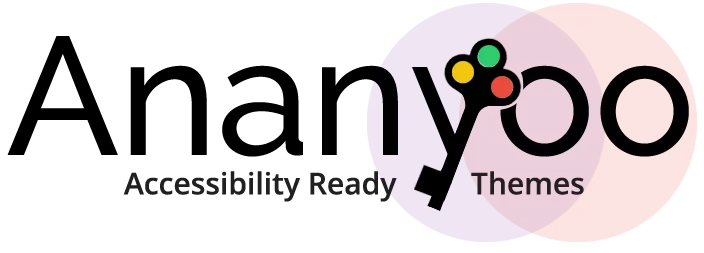
There is a general misconception that web accessibility always comes at a cost to web marketers and developers with little benefit. In actuality, following the Web Content Accessibility Guidelines (WCAG) and the search engine optimization (SEO) best practices overlap when it comes to yielding the top results.
Approximately 25% of US adults identify with some form of disability, yet marketers have primarily treated web accessibility as a reconsideration rather than a fundamental pillar of content development. Websites that take web accessibility thoughtfully consistently rank better and higher than their competition on Google and YouTube.
Website accessibility has more candid guidelines than SEOs. However, SEO is still required to get the content to work correctly through the browsers and the assistive technology of web accessibility.
What is the value of finding content when the accessibility or the user experience is poor? Similarly, does it at all matter how accessible content is if nobody ever sees it? Web accessibility and search engine optimization (SEO) are gradually bringing relevant content to users.
Here Are the Following Main Ways How You Can Optimise the Website With Web Accessibility.
- Interaction Methods: As we are talking of accessibility, some users might not be able to use the keyboard, mouse, or fingers for their mobile phones when browsing through a website. For them, it is necessary to reduce the inconvenience so that they can understand the content and gather the information as required. Including features such as text-to-speech options can help in these designs as they help users handle the website without any physical interactions.
- Responsive Design: It is an accepted fact that websites demand to be compatible with both desktop and mobile versions for viewing. As most of the themes of the site are already responsive when built, it is not always required to have a professional designer on board. This means developers can automatically resize to become readable and accessible from any handheld device. It is the efficiency of the website developer to know that websites have to be responsible for improved accessibility.
- Alternative Text: Some users may have trouble comprehending the images on the website. For them, the ALT text and caption fields become important features while navigating the site. This method will allow the user to learn what sort of visual context has been paired up with the information and content without really having to discern the image. It is also a smarter idea to enter a lengthy description of the pictures in either the alt text or caption fields.
- Text Resizing: Some users might find it remarkably challenging to read the tiny texts on the website. However, the oversizing feature often gives a little sloppy look on the web design in general. Developers, thus, take it to add a text resizing tool so that the users can select the size of the text at their convenience. It is also helpful to make sure that the website runs at different browser zoom levels.
- Simplified Messaging: It is never a safe idea to fill the website with excessive content. No users or readers enjoy reading big words or text on each page, given that attention spans are already shrinking. Moreover, it is also not a very bright idea to use industry-specific jargon when writing for the websites as it might seem incomprehensible to a layperson. Clear language with simple designs always wins the game.
- Transcripts: Videos, podcasts, or any other forms of interactive media content often stands as an obstacle for users who have trouble in hearing or vision. Transcripts and captions become a must for such people to perceive the information accurately.
- Text Color: Using hyperlinks has always remained a good idea, especially when competitive websites do not have one. However, some particular colours can be an obstacle, such as red. Red hyperlinks might be confusing for people suffering from colour blindness. The web developers, thus, should work on the people’s ability to see the right colour. It is preferable to find a colour-blindness website checking tool which will ensure that all the colours that are being used for the website, right from the colour of the logo to the website design, must have proper text background contrast with each other so that it is convenient for everyone to see.
- Text Organisations: This is an essential section of the text simplification process. It is always advised to use large and bright titles on top of every page. This method helps in better readability of the page along with more straightforward navigation. The usage of proper header titles and section breaks within the body text on each page is also imminent. The white space should be correctly used for a better and clear vision.
- Directional Cues: If developers use tooltips, it will improve the website’s accessibility. Tooltips, as evident as it sounds, are special tools which are useful for the user when they get grounded at any point on the website while browsing. The tooltips help to direct the user toward the main element and content of the site.
- Internal Search: An internal search bar must be provided as some people might find navigating the website challenging. Preferably, the inner search bar must be placed at the top of the site, especially for sites which deal with e-commerce products. The search bar must also have a voice search feature for the convenience of those who cannot scroll or browse through the section like other people for limited physical conditions.
- Clear Navigation: Maintaining consistent and clear navigation through the website is imperative. It is also helpful for users who fail to connect with the content through proper tools, such as a mouse or keyboard. Designers and developers must make sure that the labels are written in simple terms so that everyone can understand it without difficulty.
- Form Directions: Whether it is newsletter sign-ups, purchases or any other purpose, any website should have contact forms, more so when it is a business or official website. Customers, more often than not, like to connect with the buyer, and phone calls are so last decade. However, as some users might have comprehension issues, it is necessary to have field labels marked for better directions and usability. These help the user to make it convenient and to fill in the required information seamlessly.
Conclusion
So, if you are a web-developing service provider looking for a brighter outlook on the discussed points, Anblik is more than happy to assist you. Our senior-level experts will advise you to learn more about the website compliance guidelines. We can also offer you a free scan and graded report that will show all the required measures and reduce the risk factors of your website’s performance against WCAG 2.0 guidelines, along with a better SEO result.
Get a free 30-minute consultation about your website’s accessibility from the Ananyoo team to get going!
